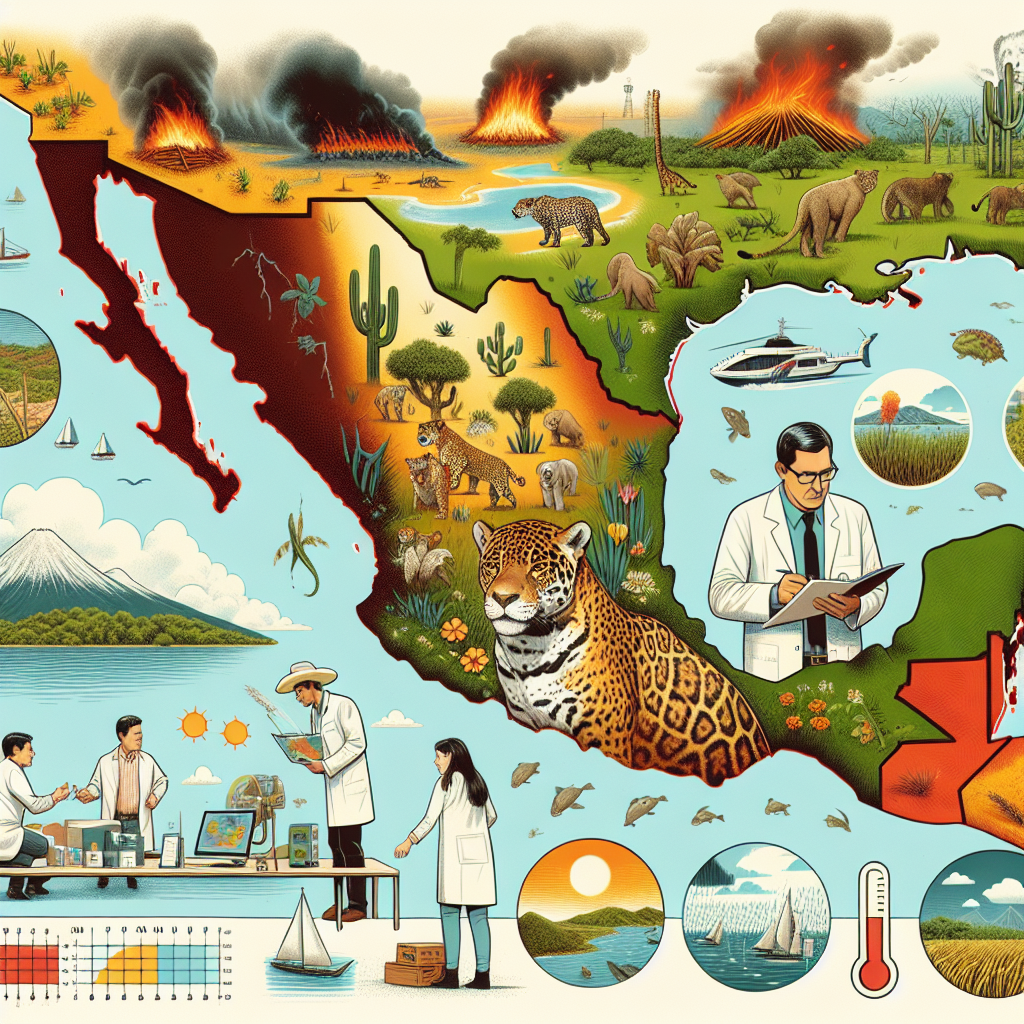Understanding the Impact of Climate Change on Jaguar Conservation in Mexico
Jaguar Habitat and Distribution
The jaguar (Panthera onca), the largest cat in the Americas, primarily inhabits the tropical rainforests, savannas, and wetlands of Mexico. This majestic species plays a crucial role in maintaining the ecological balance of its habitat. Mexico is home to significant jaguar populations, particularly in the southern regions, including the Yucatán Peninsula and the Sierra Madre mountain ranges. However, the distribution and quality of these habitats are increasingly threatened by climate change.
Temperature and Precipitation Changes
Climate change is rapidly altering weather patterns across Mexico, leading to increased temperatures and changing precipitation regimes. These shifts affect the availability of water sources essential for jaguar survival. Jaguars rely on healthy ecosystems where rivers, streams, and wetlands sustain not only their prey but also their own hydration needs. Prolonged droughts or erratic rainfall can disrupt these ecosystems, leading to a decrease in prey species such as deer, capybaras, and peccaries. Consequently, jaguars may find it increasingly difficult to hunt and survive.
Deforestation and Habitat Fragmentation
Another significant threat exacerbated by climate change is deforestation. The increase in extreme weather events, such as hurricanes and heavy rainfall, can lead to erosion and loss of forest cover. As habitats are lost or fragmented, jaguars are left with fewer viable territories. This fragmentation often leads to genetic bottlenecking as isolated populations struggle to interbreed, weakening their resilience to environmental stresses brought on by climate change.
Impact on Prey Availability
As climate change alters habitats, prey species are also affected. Changes in temperature and rainfall can shift the ranges of these animals, forcing them into narrower areas or pushing them into conflict with human populations. This alteration not only leads to fewer prey options for jaguars but also increases the likelihood of human-wildlife conflicts, as jaguars may prey on livestock as their natural food sources diminish.
Increased Human Encroachment
Urbanization and agricultural expansion are significant contributors to habitat loss in Mexico. Climate change exacerbates this issue by making certain areas more attractive for agricultural activities as temperatures rise and rainfall becomes more unpredictable. As farmers seek to optimize their land for crops that can withstand these new conditions, they often encroach further into jaguar territory. This results in direct competition for resources and potential human-wildlife conflicts, increasing the likelihood of jaguar fatalities due to retaliatory killings.
Conservation Strategies Under Threat
Conservation programs aimed at protecting jaguar populations have become increasingly complex due to climate change. Traditional strategies may no longer be effective as habitats and ecosystems change. Conservationists must now consider climate resilience when implementing protection plans, leading to the need for flexible management strategies.
Restoration of Natural Corridors
One effective conservation strategy involves the restoration of natural corridors that facilitate jaguar movement between fragmented habitats. These corridors allow for gene flow between populations, mitigating the effects of inbreeding. However, as climate change alters the distribution of species and habitats, the ideal corridors may shift, requiring constant evaluation and adaptation of restoration efforts.
Community Involvement in Conservation
Local communities play a vital role in jaguar conservation efforts. Engaging residents in conservation initiatives can foster coexistence and reduce human-wildlife conflicts. However, the economic pressures exacerbated by climate change—such as increased crop failures or livestock losses—can undermine these community efforts. Programs that link conservation with local economic benefits, such as ecotourism or sustainable agriculture, must adapt to these changing circumstances to remain effective.
Research and Monitoring
Understanding how jaguar populations respond to climate change is critical for effective conservation. This requires ongoing research and environmental monitoring to track changes in population dynamics, behavior, and habitat use. Utilizing technology such as remote sensing and camera traps can provide valuable data to inform adaptive management strategies. Conservationists must remain agile, ready to modify approaches based on new findings related to climatic effects on ecosystems.
International Collaboration
Jaguar conservation is not solely a national issue; it requires international collaboration, particularly in transboundary regions where populations may span multiple countries. Climate change knows no borders, and conservation efforts must be synchronized across nations to ensure the survival of the species. Collaborative frameworks can help share resources, knowledge, and strategies that are effective under changing climatic conditions.
The Role of Awareness and Education
Public awareness and education play a crucial role in jaguar conservation. By educating communities about the impacts of climate change on local ecosystems and species, individuals can be empowered to act as stewards of the environment. Raising awareness about the importance of jaguars and their role in maintaining biodiversity can inspire grassroots conservation initiatives, emphasizing that protecting these big cats is integral to the overall health of the ecosystem.
Policy Implications
Finally, effective jaguar conservation in the face of climate change requires robust policy frameworks that address both environmental protection and climate adaptation. Policymakers must prioritize the creation and enforcement of protected areas, implement sustainable land-use practices, and invest in conservation science. Integrating climate considerations into policy decisions can facilitate a more resilient future for jaguars in Mexico.
Conclusion
The interplay between climate change and jaguar conservation efforts in Mexico is multifaceted. Addressing the threats requires a comprehensive understanding of ecological dynamics, community engagement, international cooperation, and adaptive management strategies. By recognizing the significant impacts of climate change on jaguar habitats and populations, conservationists can better protect this keystone species and ensure its survival in a changing world.







